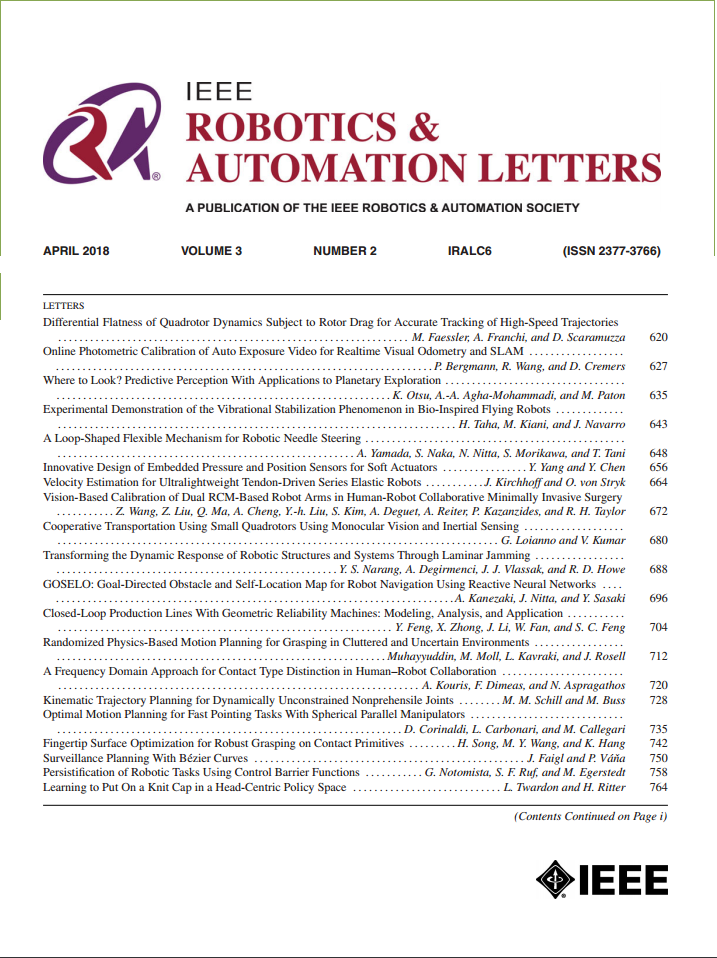Planar Velocity Estimation for Fast-Moving Mobile Robots Using Event-Based Optical Flow
IF 4.6
2区 计算机科学
Q2 ROBOTICS
引用次数: 0
Abstract
Accurate velocity estimation is critical in mobile robotics, particularly for driver assistance systems and autonomous driving. Wheel odometry fused with Inertial Measurement Unit (IMU) data is a widely used method for velocity estimation, however, it typically requires strong assumptions, such as non-slip steering, or complex vehicle dynamics models that do not hold under varying environmental conditions, like slippery surfaces. We introduce an approach to velocity estimation that is decoupled from wheel-to-surface traction assumptions by leveraging planar kinematics in combination with optical flow from event cameras pointed perpendicularly at the ground. The asynchronous基于事件光流的快速移动机器人平面速度估计
准确的速度估计对于移动机器人来说至关重要,特别是对于驾驶员辅助系统和自动驾驶来说。车轮里程计与惯性测量单元(IMU)数据融合是一种广泛使用的速度估计方法,然而,它通常需要很强的假设,例如防滑转向,或者复杂的车辆动力学模型,这些模型在不同的环境条件下(如光滑的表面)不成立。我们引入了一种速度估计方法,该方法通过利用平面运动学与垂直指向地面的事件相机的光流相结合,从车轮到地面的牵引力假设中解耦。事件相机的异步延迟和高动态范围使其对运动模糊具有高度鲁棒性,运动模糊是自动驾驶基于视觉的感知技术的常见挑战。在1:10比例的自动驾驶赛车平台上进行了现场实验,并与精确的运动捕捉数据进行了比较,结果表明,该方法不仅性能与最先进的Event-VIO方法相当,而且横向误差也提高了38.3%。高速公路速度高达${\text{32}} \,{\text{m}}/{\text{s}}$的定性实验进一步证实了我们方法的有效性,表明在现实世界中部署的巨大潜力。
本文章由计算机程序翻译,如有差异,请以英文原文为准。
求助全文
约1分钟内获得全文
求助全文
来源期刊

IEEE Robotics and Automation Letters
Computer Science-Computer Science Applications
CiteScore
9.60
自引率
15.40%
发文量
1428
期刊介绍:
The scope of this journal is to publish peer-reviewed articles that provide a timely and concise account of innovative research ideas and application results, reporting significant theoretical findings and application case studies in areas of robotics and automation.
 求助内容:
求助内容: 应助结果提醒方式:
应助结果提醒方式:


